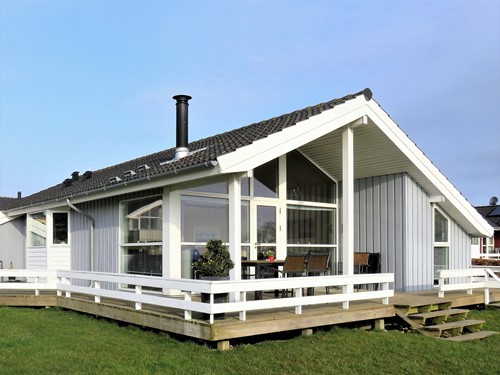
Scandinavian design is a popular style in exterior and interior home design. As the name might suggest, this style originated in Denmark, Sweden and Norway and combines several elements inspired by life in the Northern Hemisphere. While similar to other styles that share some of the same concepts, Scandinavian design is far more specific than what some might label simply as “minimalism.” Instead, it is a design style heavily inspired by its origins and location.
How do you know recognize Scandinavian design? Here are the basic elements of the style, inside and out:
Lots of Light
One of the key characteristics of Scandinavian design directly results from a unique location. The long nights and long winters of far northern climates mean people spend a lot of time inside. It also means that builders and homeowners alike try use every bit of natural light they have access to. Therefore you will see glass roofs, walls and an emphasis on large windows in homes built with Scandinavian design style in mind.
Cozy & Comfortable
So much time spent indoors also created an emphasis on comfortable interiors. Neutral color palettes and natural textures combine with soft lighting and practical-rustic features to create a sense of “hygge” or coziness. According to Scandification, this concept encapsulates the comfort and sheltering warmth of home and togetherness. Scandinavian design is all about inviting spaces where you can remain happy and comfortable through the winter.
Energy Efficient
Efficient heating is essential in cold climates, but Scandinavian architecture takes it a step further. These homes are usually very energy efficient, not only because of the insulation and heating systems but because of specific layouts meant to warm up quickly and stay that way. Scandinavian architects design the flow and shape of rooms to retain heat, keeping you comfortable without expending unnecessary energy.
Clean Lines
Scandinavian interior and exterior design emphasizes clean lines. Similarly to mid-century modern architecture, there is little embellishment and a preference for bold geometric shapes and angles. However, Scandinavian design is clean without being severe. It is also simple without being boring. Exteriors combine natural textures and soft color palettes with aesthetically interesting features like deep, asymmetrical gables and multi-level rooflines.
Connection With Nature
While Scandinavian architecture aims to be eye-catching visually, it also follows the concept of integrating with the surrounding environment. Scandinavian architecture works with the terrain rather than makes a bold contrast to it. This is where the natural textures and colors come into play for exteriors: softer, muted tones are pleasing to look at as part of a greater view. For interiors, Scandinavian design achieves a connection to nature through making that same beautiful view available to everyone inside: glass walls, skylights and windows keep you connected to the outside world even when you’re warm and cozy.
You can recognize and define Scandinavian design by all the above, but you can understand it further through the larger-scale public architecture in its locations of origin. These countries boast amazing architectural landmarks like the Oslo Opera House, Copenhagen City Hall and the Stockholm Public Library’s reading room. These and more serve as excellent sources of inspiration for anyone wanting to cultivate the elements of Scandinavian design.
About the Author

Taylor Stewart
Taylor Stewart was born and raised in Richmond, Va. He attended Elon University on a baseball scholarship, but after suffering an unlikely injury, he was forced to give up on his dreams of making it to the big leagues.In 2006, Taylor moved to Bonita Springs, FL to pursue a career as a Professional Golfer. After traveling up and down the east coast of the United States playing in various golf tournaments on various golf tours, Taylor suffered yet another injury and was forced to change his career plans. Now, as a real estate agent,Taylor as chosen to put the same drive and determination that made him successful in sports, into helping others find their own piece of paradise in southwest Florida. Especially for those living in or looking for that perfect golf community, Taylor is able to guide his buyers and sellers through his expertise of the golf game and southwest Florida golf courses. Taylor is"Your ace in the hole."